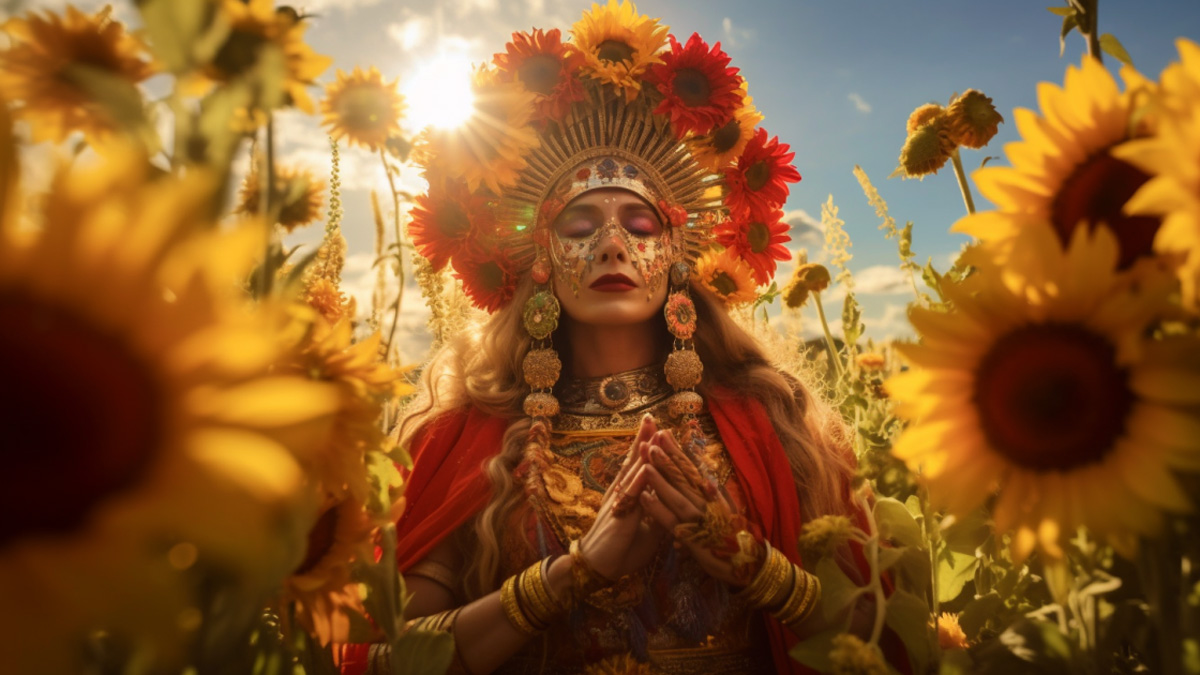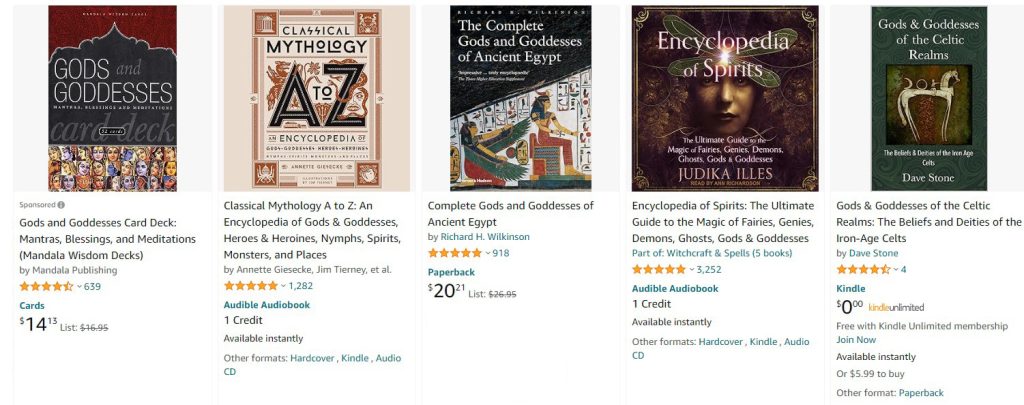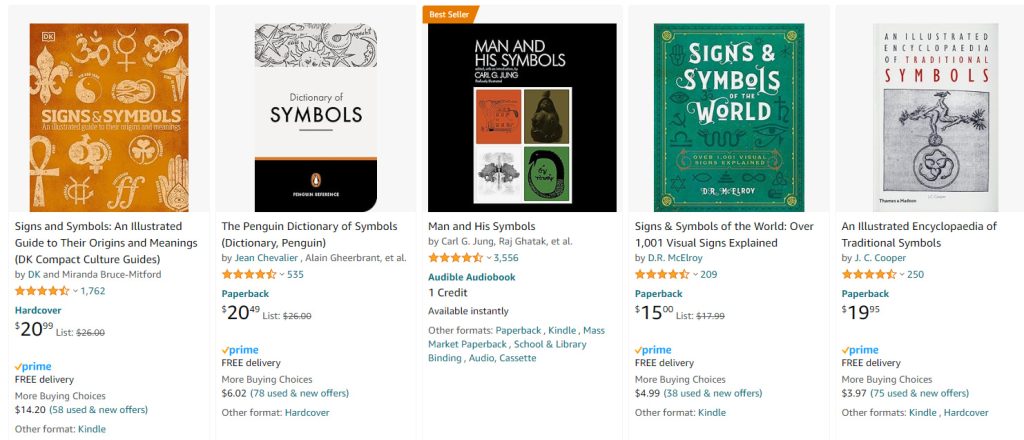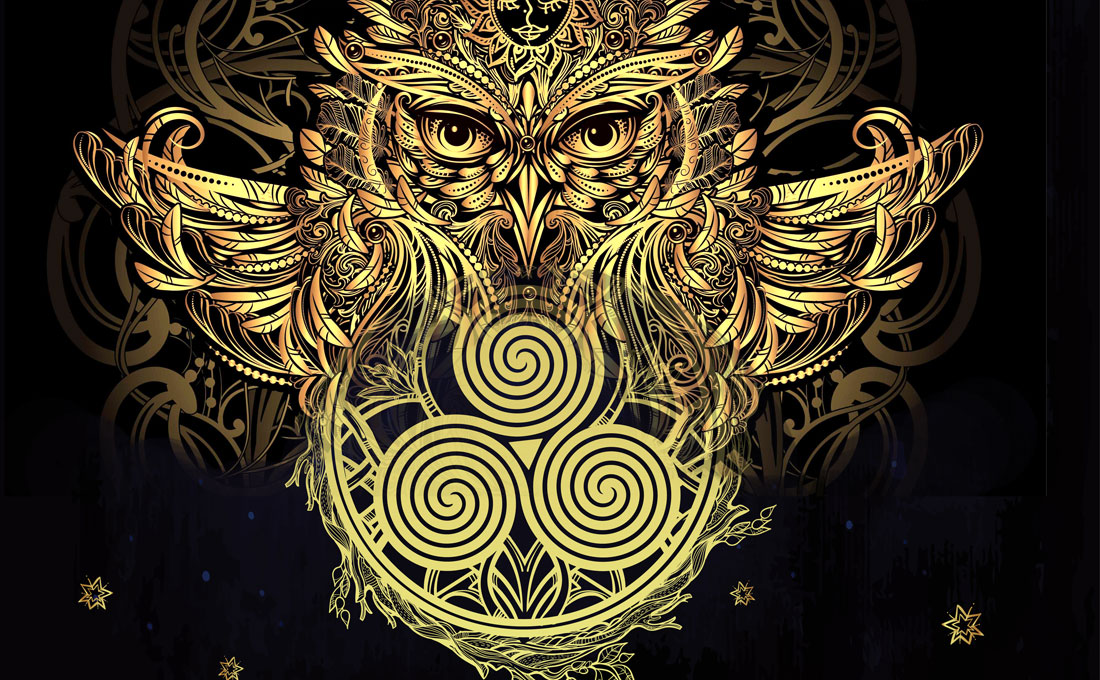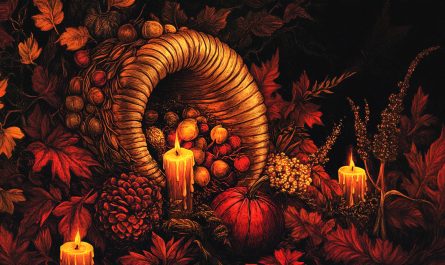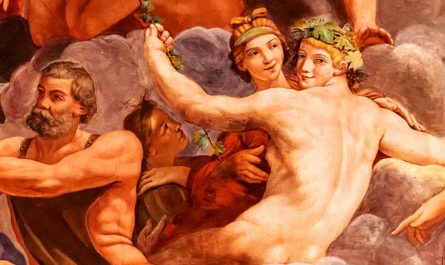Last Updated on June 10, 2025 by Avia
As we bask in the warmth of this glorious season, it’s only fitting to explore the fascinating world of gods and goddesses who reign over summer. So, I thought it would be fitting to talk about some notable gods and goddesses of summer along with their symbols.
These ancient deities hold immense power and symbolism within their realms, each representing different aspects of this cherished time of year. From Egyptian pharaohs to Celtic warriors, Greek heroes to Aztec divinities – they all have a place in the pantheon of summer.
Table of Contents
Symbolism of Summer (Litha)
Before I go into the meaning and the symbols of the gods and goddesses of summer, I thought it would be a good idea to talk a little bit about the symbolism of summer. The summer solstice, known as Litha in pagan traditions, is a time of celebration and abundance. Symbolically, summer represents growth, vitality, and the peak of life’s energy. It is a season of warmth and light, where nature flourishes in all its glory.
At this time of year, the sun reaches its highest point in the sky, bringing with it long days filled with sunshine. The sun is seen as a symbol of strength and power during these months. Its rays provide nourishment to plants and animals alike.
In addition to the sun, fire also holds great significance during Litha. Bonfires are lit to honor the sun god and to ward off any negative energies that may be lingering from winter. Fire symbolizes transformation and purification – burning away what no longer serves us so that we can embrace new growth.
About the Gods of Summer
The gods of summer hold a special place in mythology, representing the power and abundance associated with this vibrant season. Let’s explore some of these ancient deities and their symbols.
Horus (Egypt)
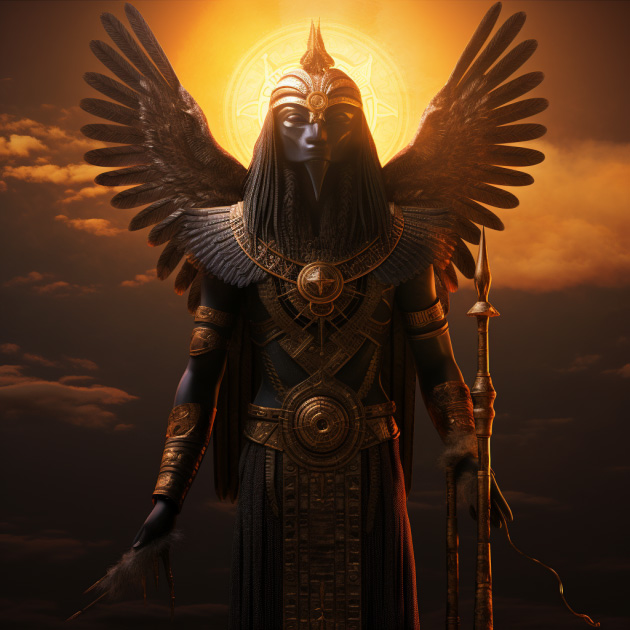
Horus is the ancient Egyptian god-king of the sky and is closely associated with the power and energy of summer. He is often depicted as a falcon-headed deity, representing his connection to the heavens. Horus embodies strength, protection, and divine authority.
One of the most significant symbols associated with Horus is the Eye of Horus or Udjat. This powerful symbol represents healing, rejuvenation, and protection against evil forces. Horus is said to possess magical properties that can ward off negative energies.
Another symbol commonly associated with Horus is the solar disk encompassed by two falcon wings. This emblem signifies his role as a solar deity and his association with light and warmth – essential elements of summertime.
In addition to these symbols, Horus carries other objects that are significant in Egyptian mythology. These include an ankh (symbolizing life), a crook (representing leadership), and a flail (indicating power).
Aten (Egypt)
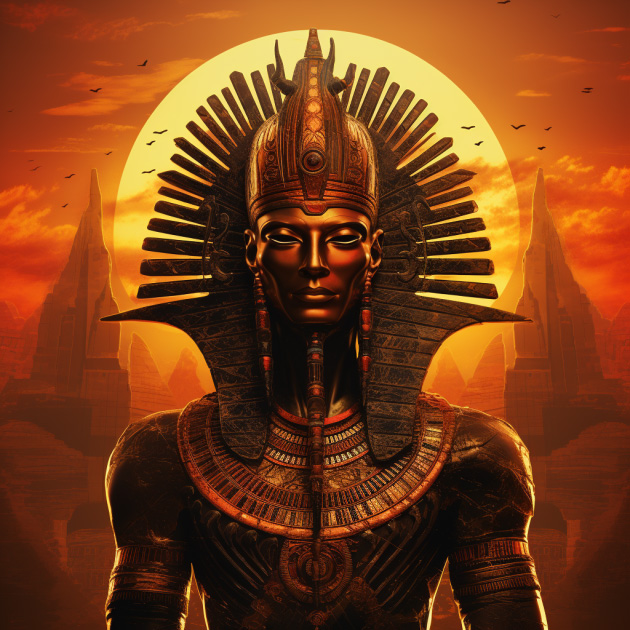
Aten, the ancient Egyptian god associated with the sun and solar energy, holds a prominent place among the Gods of Summer. Aten’s worship reached its peak during the reign of Pharaoh Akhenaten in the 14th century BC when he was declared the supreme deity.
Symbolized by a radiant sun disk with rays extending downward, Aten represents light and warmth, making him an ideal figure for celebrating summer. The sun disk symbolizes his power to nourish and sustain life on Earth.
Aten is often depicted with hands holding ankh symbols representing eternal life. This signifies his role as a benevolent deity who brings abundance and vitality to crops and vegetation during summer.
In addition to being associated with sunlight and growth, Aten also embodies concepts such as truth, justice, and cosmic harmony. His presence reminds us of the balance between light and darkness that exists in nature.
Honoring Aten during the summertime can involve spending time outdoors under the sun’s warm rays or engaging in activities that celebrate solar energy, like gardening or practicing yoga outside. It’s a wonderful opportunity to connect with nature while appreciating its life-giving force.
Apollo (Greek)
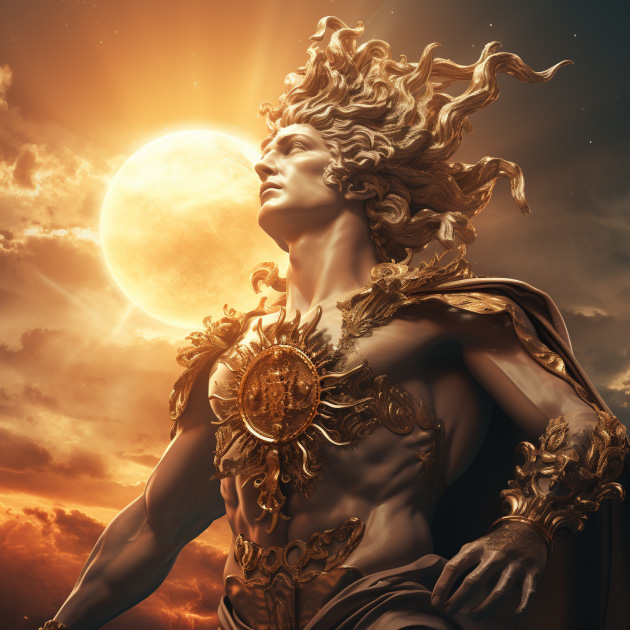
Apollo, the Greek god of light, music, and prophecy, is closely associated with the warmth and radiance of summer. As a symbol of beauty and harmony, Apollo represents the essence of this vibrant season.
One of Apollo’s most recognizable symbols is his golden lyre. This musical instrument embodies his mastery of music and serves as a reminder of the power of creativity and artistic expression. The resonant melodies produced by Apollo’s lyre can bring joy to any gathering during those long summer nights.
Another significant symbol associated with Apollo is the laurel wreath. This crown made from leaves represents victory and achievement and has become an enduring emblem of honor. In ancient Greece, it was bestowed upon champions and poets who excelled in their respective fields. During summer festivals honoring Apollo, participants would often wear laurel wreaths as a sign of celebration.
The sun itself can be seen as one of Apollo’s symbols. Both the sun and the god personify the radiant energy that fuels life on Earth during summertime. From sunrise to sunset, Apollo’s presence is felt in every ray that warms our skin and illuminates our surroundings.
In addition to these symbols, other representations associated with Apollo include bows and arrows (symbolizing his skill in archery), dolphins (which serve as messengers for him), and crows (whose flight patterns are said to convey prophetic messages).
Huitzilopochtli (Aztec)
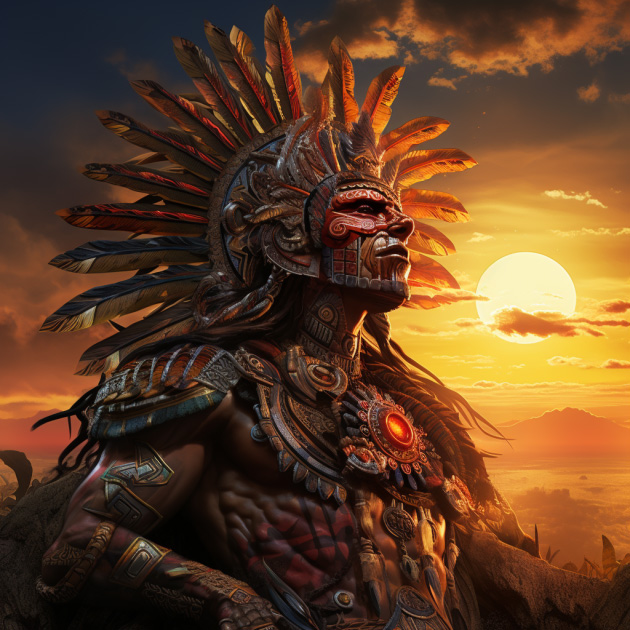
Huitzilopochtli, the Aztec god of war and the sun is a powerful deity associated with strength, courage, and victory. In Aztec mythology, he was often depicted as a hummingbird or an eagle carrying a serpent in his beak.
Symbolically, Huitzilopochtli represents the intense heat and energy of summer. His name translates to “Hummingbird of the South,” further emphasizing his connection to warmth and vitality. As the god of war, he was believed to fuel warriors with bravery on the battlefield.
One prominent symbol associated with Huitzilopochtli is the Xiuhcoatl, which represents fire and solar energy. It is depicted as a mythical serpent-dragon made out of turquoise stones that radiate power. The warrior’s obsidian knife, Macuahuitl, symbolizes Huitzilopochtli’s strength and destructive force.
Additionally, Huitzilopochtli is often portrayed wearing feathers adorned with vibrant colors like red and blue. The Aztecs highly valued feathers for their association with birds soaring through sunny skies.
Through these symbols, Huitzilopochtli embodies both the fierce heat of summer and the indomitable spirit needed during battle. He reminds us to embrace our inner strength and face challenges head-on during this season of abundance and growth.
Belenos (Celtic)
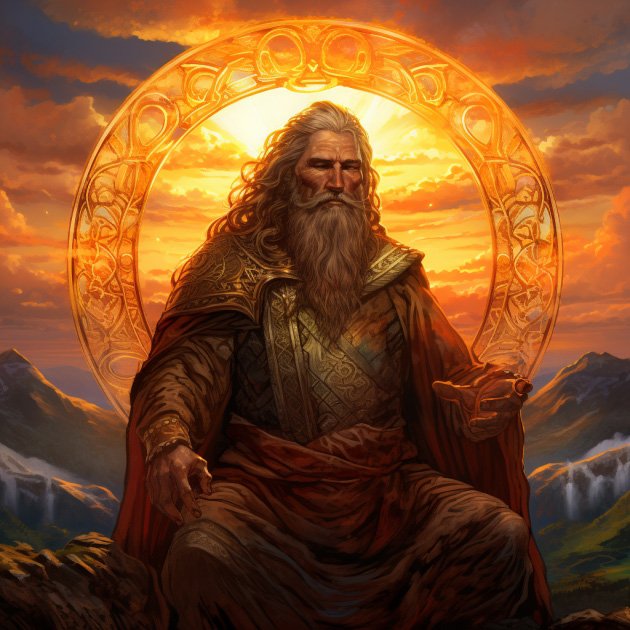
Belenos, the Celtic god of Summer, is a vibrant and powerful deity associated with warmth, light, and the sun’s life-giving energy. As one of the ancient gods of Summer, Belenos holds great significance in Celtic mythology.
In Celtic tradition, Belenos is often depicted as a youthful and radiant figure adorned with golden rays emanating from his head. These rays symbolize his connection to the sun and its life-sustaining qualities. The image of Belenos brings to mind feelings of joy, abundance, and vitality.
The symbols associated with Belenos further reflect his association with Summer. One such symbol is the wheel or solar disc, representing both the cycle of time and the eternal nature of life’s seasons. Another key symbol is fire – a representation of warmth, transformation, and purification.
Devotees honoring Belenos during Litha – the summer solstice – may incorporate these symbols into their celebrations by creating bonfires or using candles to represent his fiery essence. They may also adorn altars or outdoor spaces with images or representations depicting the radiant energy that Belenos embodies.
Lugh (Celtic)

Lugh, the Celtic god of summer, radiates with vibrant energy and represents the peak of the season’s power. As a multi-talented deity, Lugh is associated with various aspects such as light, craftsmanship, and skill.
One of Lugh’s most prominent symbols is his spear – a weapon that embodies his warrior spirit and prowess in battle. This symbolizes both his protective and assertive nature. Additionally, Lugh is often depicted holding a harp or musical instrument, showcasing his connection to music and creativity.
As the master of all trades, Lugh also possesses symbols related to agriculture and abundance. The cornucopia signifies fertility and prosperity, while the sheaf of grain represents the bountiful harvest during this time of year.
Moreover, Lugh’s association with fire cannot be ignored. The sun wheel or solar disk symbolizes both his solar aspect as well as the transformative power of fire.
These symbols reflect Lugh’s dynamic personality as a god who encompasses various domains like warriors, craftsmanship, music, agriculture, and fire. They remind us to embrace our diverse talents during this season of growth and celebration.
Freyr (Norse)
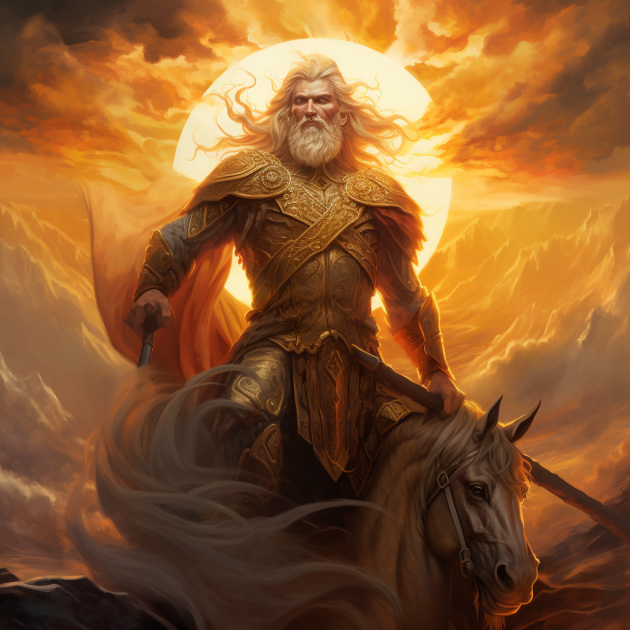
Freyr, the Norse god of summer, fertility, and abundance, is a beloved deity associated with warmth and growth. Freyr’s presence can be felt all around as the days lengthen and nature thrives under the sun’s rays.
One of Freyr’s most prominent symbols is his magical sword. Known as “Sumarbrandr,” this legendary weapon represents his strength and protection. It is said that when Freyr lost his sword during a battle, he became vulnerable until it was returned to him.
Another important symbol linked to Freyr is the golden wild boar. This divine creature named “Gullinbursti” possesses incredible speed and agility. It serves as both transportation for Freyr and a symbol of prosperity.
Freyr also holds sway over rain showers that nurture crops during summer. His connection to agriculture has made him an essential figure in rituals dedicated to ensuring bountiful harvests.
Additionally, apples are closely associated with Freyr due to their symbolism of fertility and abundance in Norse mythology. These luscious fruits represent the flourishing of life that occurs during summer.
The worship of Freyr often involves feasting together with family and friends while reveling in the joys of nature’s bounty. People may decorate altars or outdoor spaces with flowers, fruits, and other offerings that symbolize growth and fecundity.
Anyanwu (African)
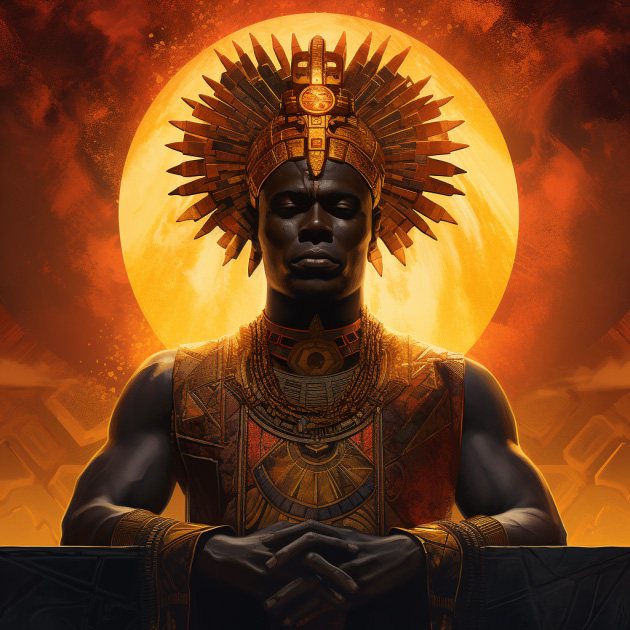
Anyanwu, the African god of the sun, holds a significant place in African mythology. Representing warmth, light, and life-giving energy, Anyanwu is revered as a powerful deity who brings vitality and abundance to the world.
In African folklore, Anyanwu is often depicted as a radiant figure with golden skin and fiery eyes. His symbols reflect his connection to the sun’s power and include elements such as flames, solar disks, and rays of sunlight. These symbols represent not only physical heat but also spiritual enlightenment and transformation.
Anyanwu’s influence extends beyond just bringing light into our lives; he is also associated with healing and rejuvenation. In many African cultures, rituals are performed to honor him during summer solstice celebrations when his energy is at its peak.
By connecting with Anyanwu’s energy during this season of abundance and growth, we can align ourselves with the natural cycles of life and tap into our own reservoirs of strength. Let us bask in his warm glow as we navigate through these sunny days – may it bring us inspiration for new beginnings and illuminate our path toward joyous experiences ahead.
About the Goddesses of Summer
Goddesses have long been associated with the essence of summer, embodying its warmth, fertility, and vibrant energy. These divine beings from various mythologies across the world are revered for their power and influence over nature during this season.
Amaterasu (Shinto)
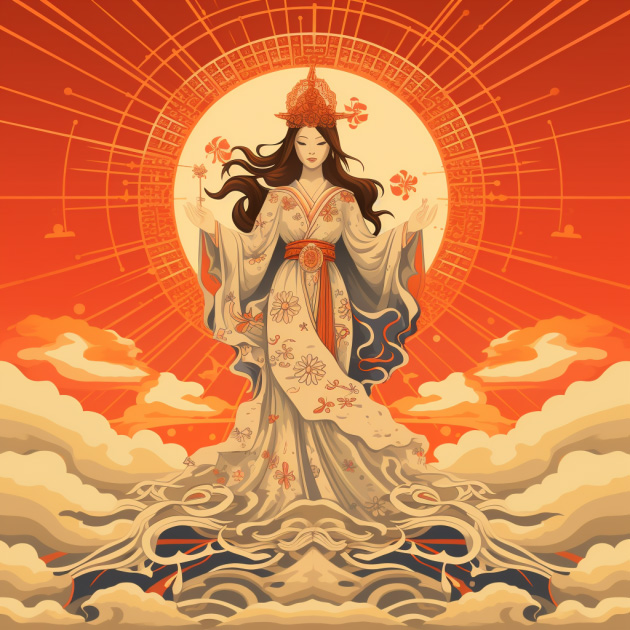
Amaterasu, the Shinto goddess of the sun, radiates warmth and light during the summer months. She is revered as one of the most important deities in Japanese mythology, representing the sun, fertility, and prosperity.
In ancient Shinto beliefs, Amaterasu is associated with various symbols that reflect her power and influence. One such symbol is the mirror, which represents self-reflection and truth. It is believed that Amaterasu’s divine presence can be seen through this sacred object.
Another significant symbol associated with Amaterasu is the Yata no Kagami, a legendary shield said to have been gifted to her by fellow gods. This shield protects against evil forces and is a reminder of her divine authority.
The crow is also closely linked to the goddess Amaterasu throughout history. Often depicted perched on her shoulder or flying alongside her chariot, these birds are considered messengers between heaven and earth.
Furthermore, peaches hold great symbolism in relation to Amaterasu. In Japanese folklore, it is said that she emerged from a cave after tricking her into coming out with dancing maidens holding ripe peaches.
Aine (Celtic)
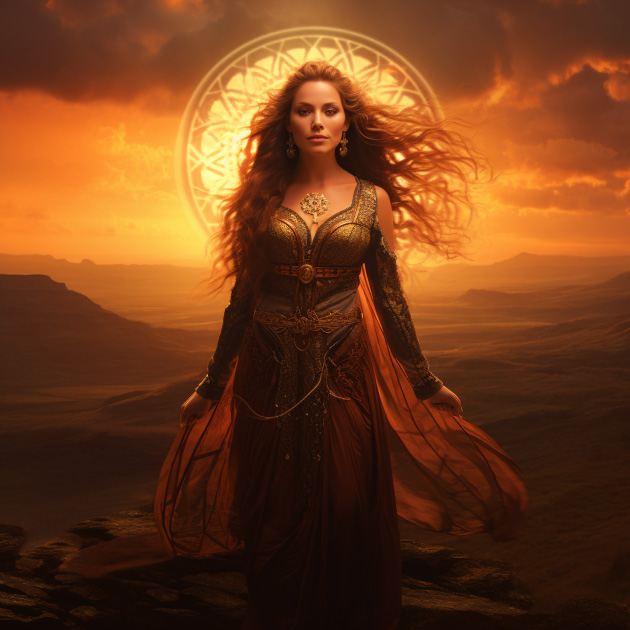
Aine, the Celtic goddess of summer, radiates warmth and vitality with her vibrant energy. Known as the Queen of Fairies, she is closely associated with the sun and fertility. Aine’s symbols are a reflection of her power and influence.
One symbol that represents Aine is the solar wheel or sun cross, which represents the eternal cycle of life and light. It embodies Aine’s connection to the sun and its life-giving energy. Another symbol associated with her is the hare, a creature known for its agility and abundance in Celtic mythology.
The bonfire is another powerful symbol linked to Aine. During Midsummer celebrations, bonfires are lit to honor her presence and invoke blessings for abundant crops and protection from evil spirits.
Flowers hold great significance in Aine’s realm too. This goddess often considers The wild rose sacred due to its association with beauty, love, and passion. Meadowsweet also holds special meaning for Aine, representing healing properties and divine blessings.
As we celebrate the arrival of summer, let us remember Aine’s symbols as reminders of renewal, growth, and joyous festivities that accompany this vibrant season!
Sulis Minerva (Roman – Celtic)
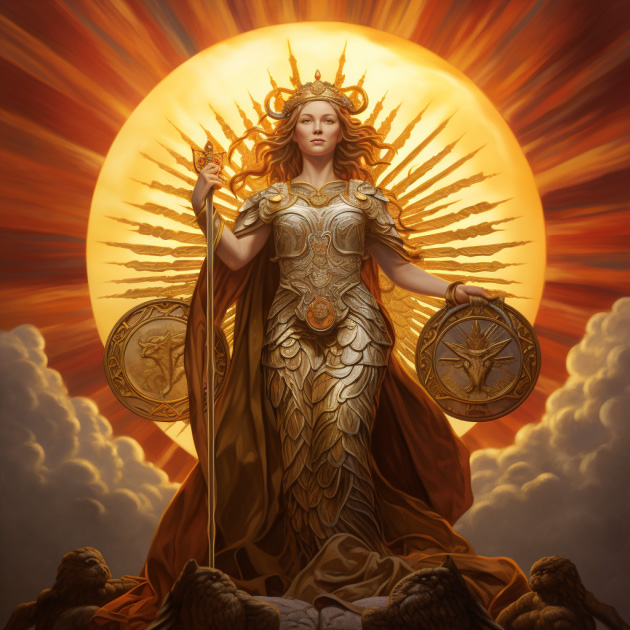
Sulis Minerva is a fascinating goddess who embodies the merging of Roman and Celtic traditions. She is associated with healing, wisdom, and the sun, making her a perfect deity to honor during summer.
In Roman mythology, Sulis was worshiped as the goddess of healing springs in Bath, England. Her sacred waters were believed to have curative properties and were frequented by pilgrims seeking physical and spiritual rejuvenation.
Minerva, on the other hand, was a prominent goddess in ancient Rome. She represented wisdom, strategic warfare, arts and crafts. As an embodiment of intellect and creativity, she brought forth inspiration to those who sought her guidance.
The fusion of these two deities into Sulis Minerva showcases their shared qualities – healing through knowledge and enlightenment. The sun symbolizes their divine presence in both Roman and Celtic mythologies.
To honor Sulis Minerva during the summer season, you can visit natural hot springs or create your own ritual bath using herbs associated with healing and wisdom. You may also engage in creative pursuits like painting or writing to invoke Minerva’s artistic influence.
Hestia (Greek)
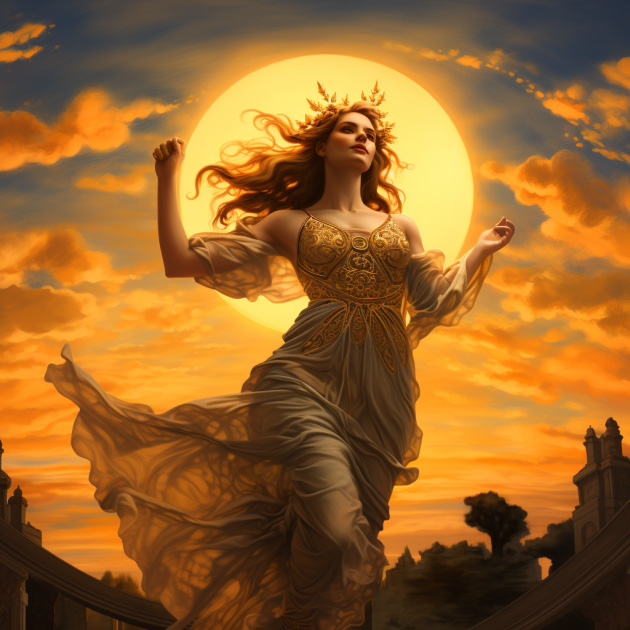
Hestia is known in ancient Greece as the goddess of hearth and home. She holds a special place in the pantheon of gods. She is often depicted as a gentle figure, tending to the sacred flame that burns in every household.
One of Hestia’s symbols is the hearth itself. The hearth represents warmth, comfort, and community. It is where families gather and share meals together, creating bonds that last a lifetime.
Another symbol associated with Hestia is the kettle or cauldron. This vessel represents nourishment and abundance. We experience Hestia’s presence in our homes through cooking and sharing food.
Hestia also carries a key as one of her symbols. This key represents her role as the guardian of domestic life and hospitality. She ensures that homes are protected and welcomes guests with open arms.
In addition to these symbols, Hestia’s peaceful demeanor embodies tranquility and inner peace. Her energy encourages us to create harmonious spaces within our homes where we can find solace from the outside world.
We can invite her warm presence into our lives by honoring Hestia during summer rituals or daily practices. Whether it be lighting a candle in her honor or setting aside time for quiet reflection at our own personal hearths, connecting with Hestia allows us to tap into feelings of comfort and security within ourselves.
Juno (Roman)
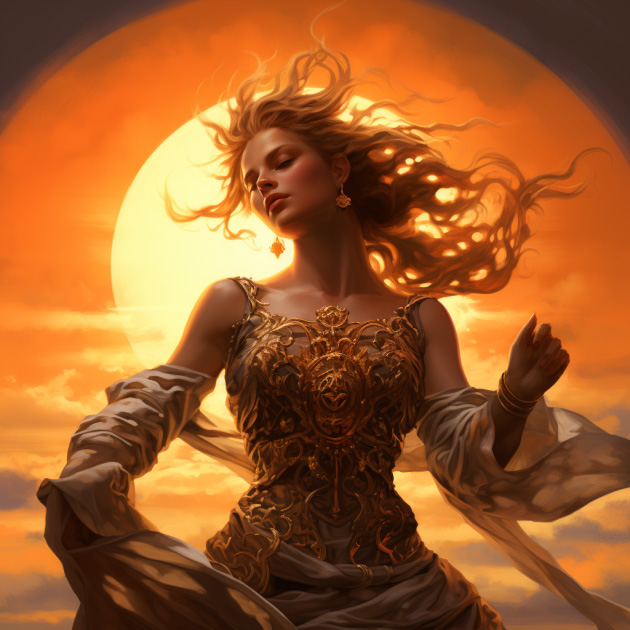
This Roman goddess represents marriage and childbirth, is closely associated with summer. She represents femininity, fertility, and the protection of women. Juno’s symbols are diverse and intriguing.
One of Juno’s most recognizable symbols is the peacock. This majestic bird’s vibrant colors and graceful movements mirror Juno’s regal presence. The peacock feathers symbolize beauty, power, and immortality.
Another important symbol associated with Juno is the pomegranate. This fruit represents abundance, prosperity, and fertility – all qualities that align with Juno’s role as a goddess of marriage and motherhood.
In addition to these symbols, Juno is often depicted wearing a crown or headdress adorned with stars. These celestial elements emphasize her connection to the sky and underline her status as queen of the gods.
Juno’s association with summer makes her an ideal deity to honor during this season. You can incorporate her symbols into your celebrations by decorating your home or altar with images of peacocks or pomegranates. You could also wear jewelry featuring these motifs or create artwork inspired by them.
Sekhmet (Egypt)
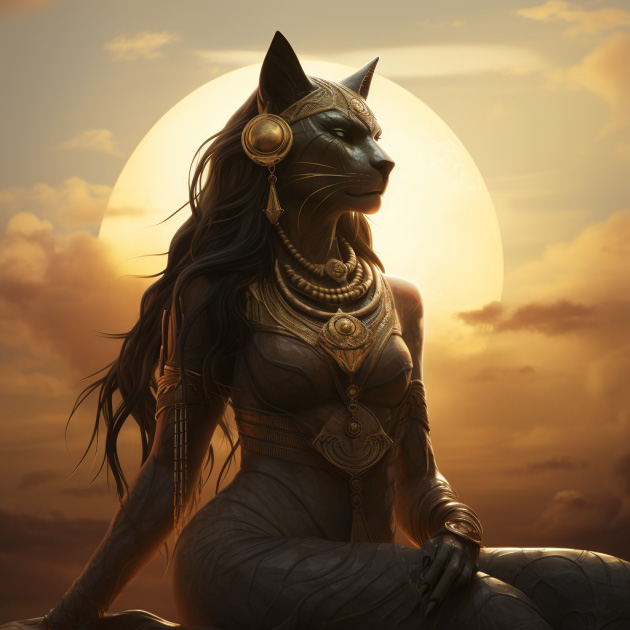
This is the ancient Egyptian goddess of war and healing. Sekhmet is a powerful deity associated with the scorching heat of summer. She is often portrayed as a lioness-headed woman, representing her fierce and protective nature. In ancient Egypt, Sekhmet was revered for her ability to bring both destruction and renewal.
One of the key symbols associated with Sekhmet is fire. Just like the blazing sun in summer, she embodies the intense energy and passion that can be both destructive and transformative. Fire represents her power to purify and cleanse, burning away negativity and bringing forth new beginnings.
Another symbol closely linked to Sekhmet is the solar disk adorned with Uraeus snakes on her head. This symbolizes her connection to Ra, the sun god, highlighting her role as a solar deity who brings warmth and light during the long days of summer.
As a goddess of war, Sekhmet also carries weapons such as arrows or swords in some depictions. These symbols emphasize her strength in battle but also serve as reminders that sometimes conflict is necessary for growth and change.
Ushas (Hindu)

Ushas, the Hindu goddess of dawn, is a radiant and vibrant deity who ushers in the new day with her golden chariot. She represents the eternal cycle of life and symbolizes hope, renewal, and transformation. Ushas is often depicted as a young maiden adorned with flowers and surrounded by birdsong.
In Hindu mythology, Ushas brings light to dispel darkness and awakens all living beings from their slumber. Her arrival heralds the beginning of a new day filled with possibilities and opportunities. Ushas is associated with vitality, energy, and positivity.
One of the symbols closely associated with Ushas is the lotus flower. Just like this exquisite bloom emerges from muddy waters to reveal its beauty at dawn, so does she bring forth light from the darkness. The lotus symbolizes purity, enlightenment, spiritual growth, and divine grace.
Another significant symbol connected to Ushas is fire. Fire represents purification and transformation; it burns away impurities to bring forth clarity and wisdom. It also signifies vitality and passion for life.
Ushas embodies the essence of summer – warmth, brightness, vitality – as she dances across the sky each morning in her ethereal glory. She reminds us that every day is an opportunity for growth and renewal if we embrace it wholeheartedly.
Xihe (China)
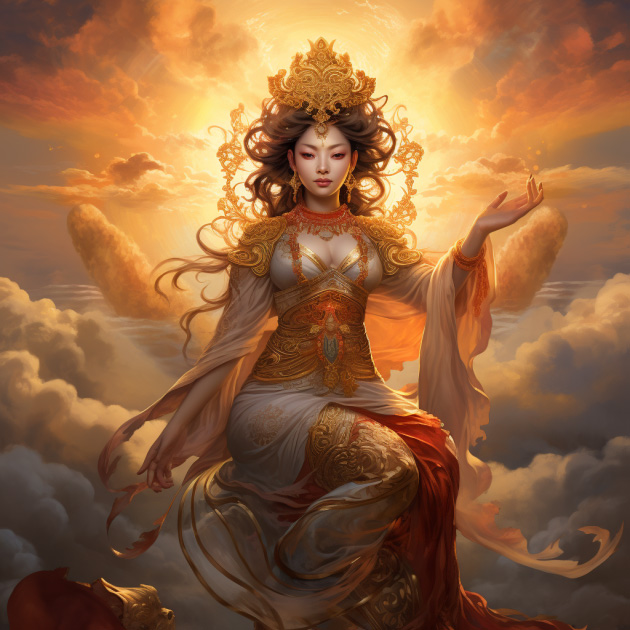
Xihe, the Chinese goddess of the sun, radiates warmth and brightness during the summer months. In Chinese mythology, she is known as the mother of ten suns, each representing a day in a ten-day week. Her presence brings light to illuminate the world and nurture its inhabitants.
Symbolically, Xihe is often depicted holding a flaming disc symbolizing the sun’s powerful energy. This represents her role as a source of heat and light that sustains life on Earth. She is also associated with golden hues and fiery colors, reflecting her connection to sunlight.
In ancient China, people honored Xihe during summer by offering prayers for good harvests and bountiful sunshine. They celebrated her by organizing festivals filled with vibrant colors and joyful music. These festivities were meant to show gratitude for her blessings while seeking protection from extreme heat.
Remembering Xihe reminds us of how important it is to soak up the sun’s rays responsibly while enjoying outdoor adventures or simply relaxing under clear skies. As we honor this radiant goddess through our actions this summer, let us embrace her positive energy and spread joy wherever we go!
Sunna or Sol (Germanic – Norse)
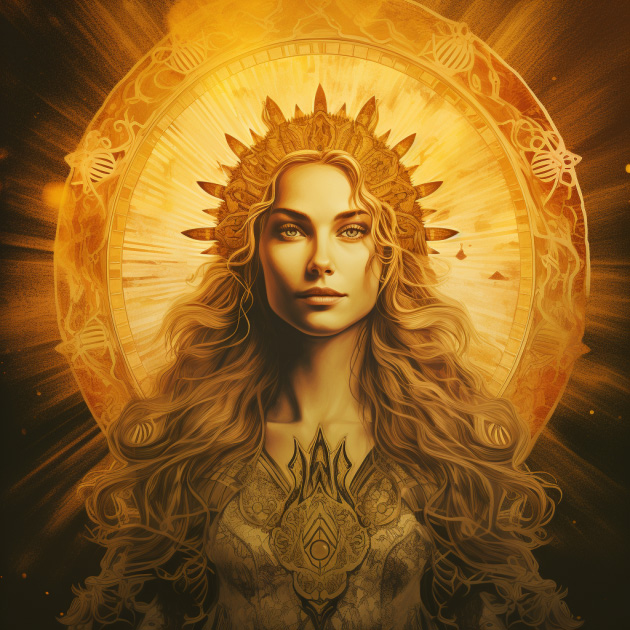
Sunna, also known as Sol, is the radiant and powerful goddess of the sun in Germanic and Norse mythology. She embodies the warmth and light of summer, bringing life and vitality to the world. Sunna is often depicted as a beautiful woman with golden hair radiating bright rays from her shining face.
Symbols associated with Sunna include fire, gold, and sunflowers. Fire represents her fiery nature and brings to mind the intense heat of summertime. Gold symbolizes her brilliance and divinity, reflecting the golden light she emits. Sunflowers are linked to Sunna due to their resemblance to the sun itself.
In ancient times, people honored Sunna by offering prayers at sunrise or creating bonfires in her honor during summer solstice celebrations. They believed that these rituals would ensure an abundant harvest and protect against darkness.
Sunna’s influence can still be felt today as we bask in the warm glow of sunlight during summer days. Whether we’re enjoying outdoor activities or simply soaking up some vitamin D on a sunny beach, we can appreciate Sunna’s presence all around us.
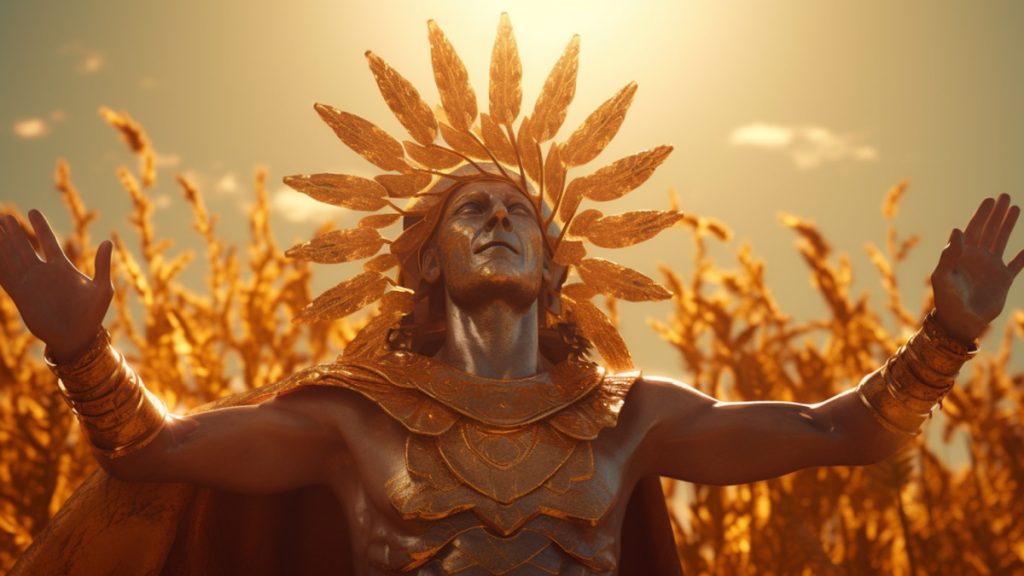
Ways to Celebrate the Gods and Goddesses of Summer
Now that I’ve shared some thoughts about various gods and goddesses of summer and their symbols, it’s time to connect more deeply with these deities. Here are some ways you can celebrate the gods and goddesses of summer to revive your summer, express gratitude, or just have a good time.
Create an Altar
Set up a sacred space in your home or garden dedicated to the gods and goddesses of summer. Decorate it with symbols representing each deity, such as Horus feathers or Amaterasu sunflowers.
Offerings and Rituals
Connect with the divine by offering gifts or performing rituals. Light candles in honor of Apollo, leave offerings of fruit for Huitzilopochtli or pour water as an offering to Sulis Minerva.
Outdoor Activities
Embrace the energy of summer by engaging in outdoor activities associated with these deities. Go horseback riding in honor of Belenos, practice archery like Artemis (Apollo’s twin sister), or spend time at the beach to honor Poseidon.
Sun Worship
Since many summer gods and goddesses are associated with the sun, pay homage by watching the sunrise or sunset ceremonies, practicing sun salutations in yoga, or simply basking in its warm rays.
Feast Days
Research specific feast days dedicated to these deities and celebrate accordingly. Prepare traditional foods associated with each god or goddess and invite friends over for a festive gathering.
Nature Walks
Take leisurely walks through nature during summer solstice celebrations to appreciate the beauty around you while connecting with earth-based deities like Anyanwu (African), who personifies nature’s abundance.
Remember that these suggestions are just starting points! Feel free to adapt them based on your personal beliefs and practices while honoring these ancient gods and goddesses of summer.
Closing Thoughts About Gods and Goddesses of Summer
These gods and goddesses of summer are not merely characters from tales long past; they represent something much deeper. They symbolize the power of light, growth, abundance, and transformation that is so prevalent during the summer months. Whether it’s basking in the radiance of Amaterasu or embracing the fiery strength of Sekhmet, these divine beings remind us to embrace the energy around us and harness it for personal growth.
Moreover, these are (by no means) all the gods and goddesses of summer, far from it. There are tons more you can research and explore. I chose these because I have a working knowledge of them and enjoy working with them in my Litha summertime spiritual ceremonies. So this is just a starting point. Go out and explore your own deities for the summer. As always, thanks for reading, and happy summer!
Mighty brightly,

© Copyrighted. All Rights Reserved.
Avia’s Amazon Picks for You
Know More! Amazon Selections About Gods, Goddesses, and Myths
Sharpen Your Symbol Savvy With These Amazon Selections
Want more? Me too! That’s why I’ve also got this for you on Whats-Your-Sign:

